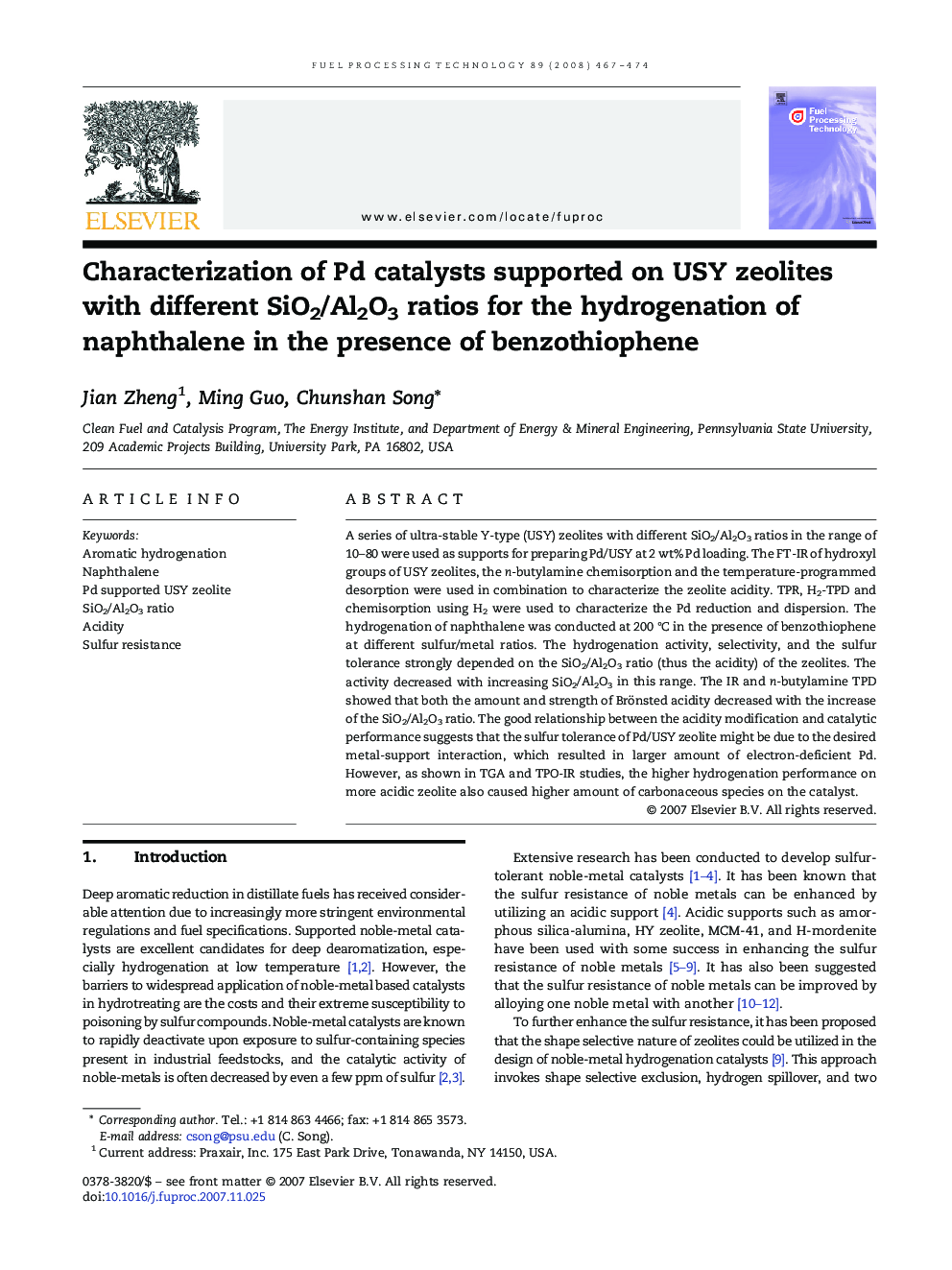| Article ID | Journal | Published Year | Pages | File Type |
|---|---|---|---|---|
| 211568 | Fuel Processing Technology | 2008 | 8 Pages |
A series of ultra-stable Y-type (USY) zeolites with different SiO2/Al2O3 ratios in the range of 10–80 were used as supports for preparing Pd/USY at 2 wt% Pd loading. The FT-IR of hydroxyl groups of USY zeolites, the n-butylamine chemisorption and the temperature-programmed desorption were used in combination to characterize the zeolite acidity. TPR, H2-TPD and chemisorption using H2 were used to characterize the Pd reduction and dispersion. The hydrogenation of naphthalene was conducted at 200 °C in the presence of benzothiophene at different sulfur/metal ratios. The hydrogenation activity, selectivity, and the sulfur tolerance strongly depended on the SiO2/Al2O3 ratio (thus the acidity) of the zeolites. The activity decreased with increasing SiO2/Al2O3 in this range. The IR and n-butylamine TPD showed that both the amount and strength of Brönsted acidity decreased with the increase of the SiO2/Al2O3 ratio. The good relationship between the acidity modification and catalytic performance suggests that the sulfur tolerance of Pd/USY zeolite might be due to the desired metal-support interaction, which resulted in larger amount of electron-deficient Pd. However, as shown in TGA and TPO-IR studies, the higher hydrogenation performance on more acidic zeolite also caused higher amount of carbonaceous species on the catalyst.
